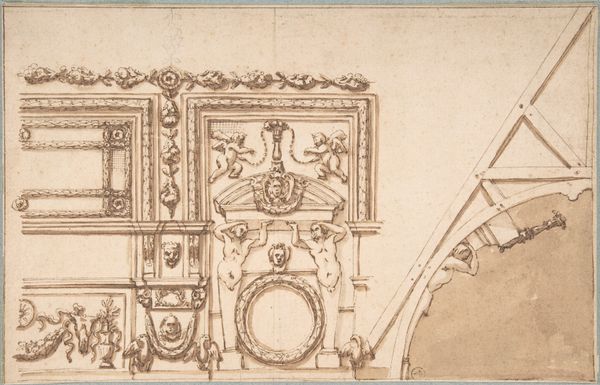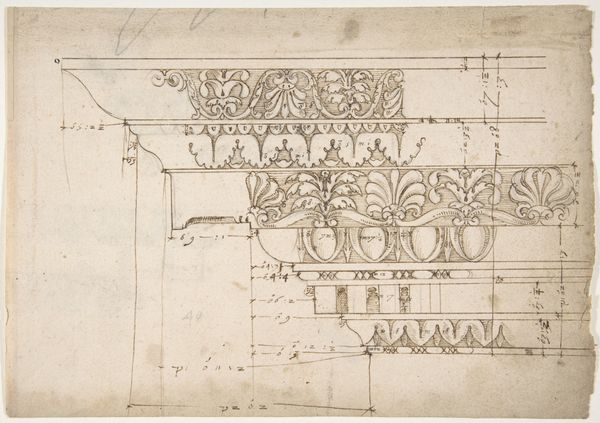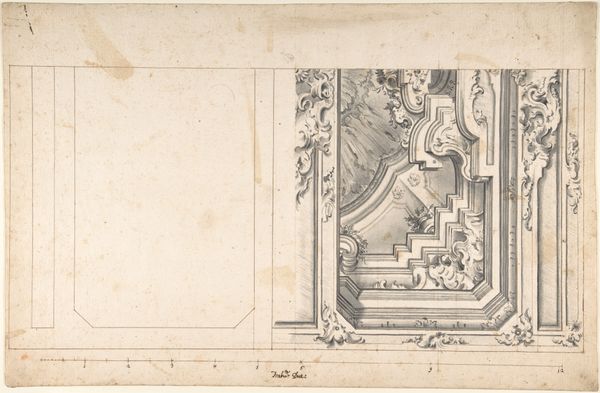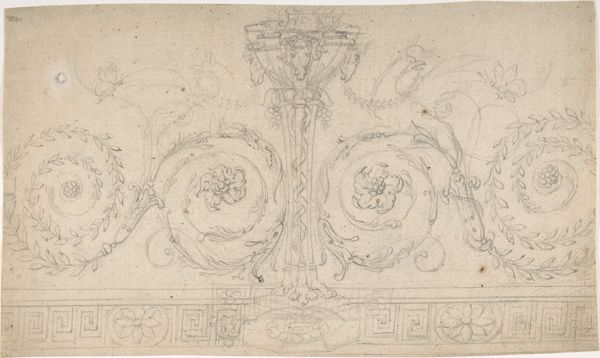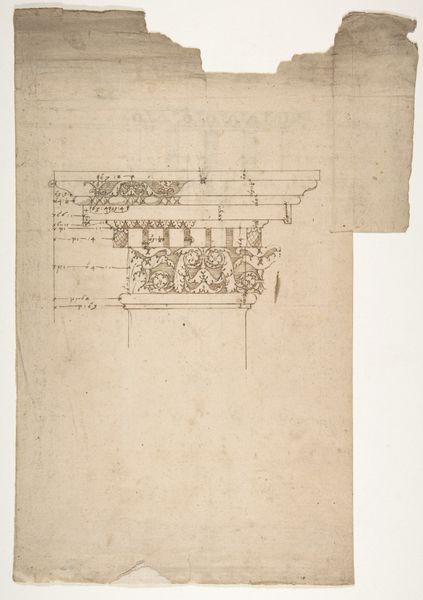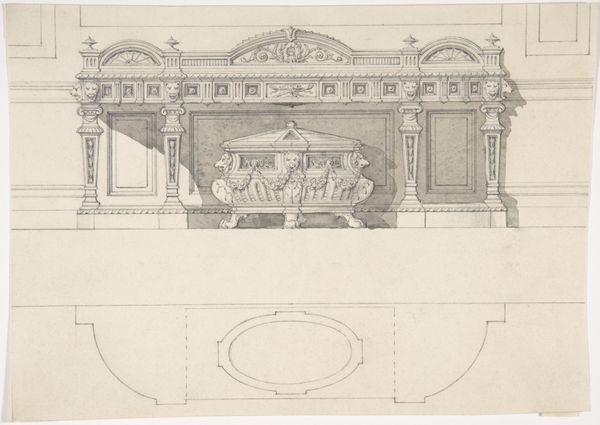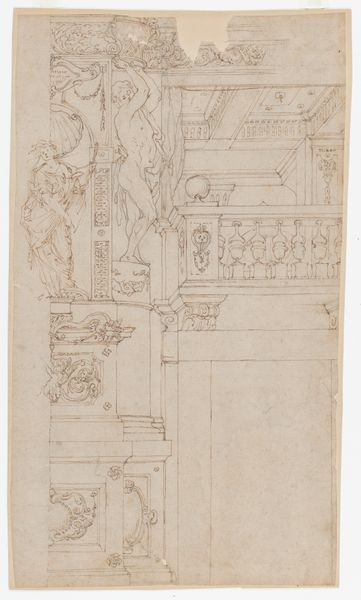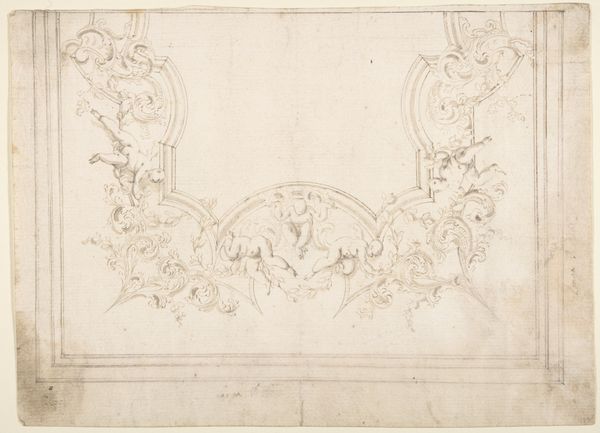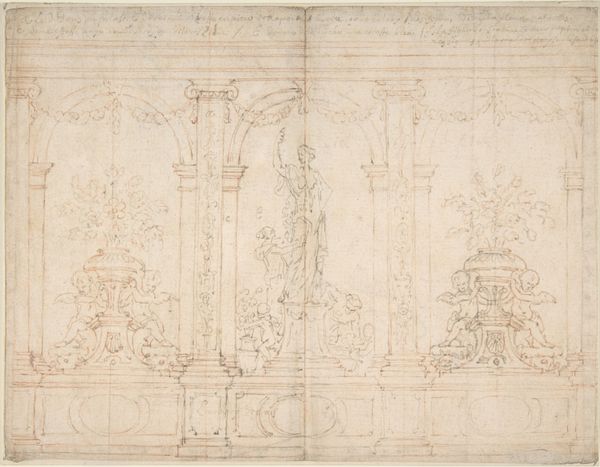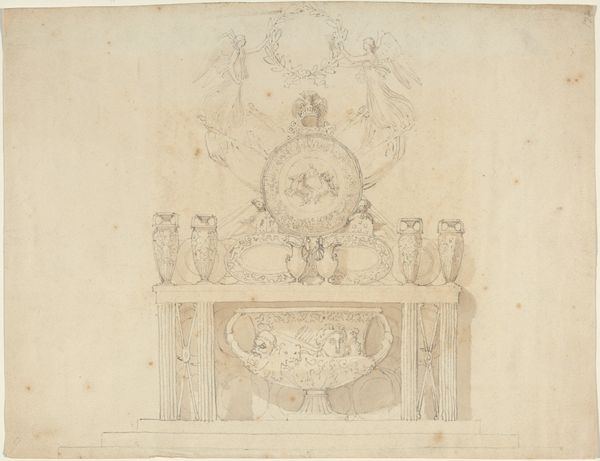
Unidentified, Ionic capital, elevation, front and side (recto) Unidentifed, Ionic capital, section, detail; Ionic capital, elevation, detail (verso) 1500 - 1560
0:00
0:00
drawing, paper, ink, architecture
#
drawing
#
paper
#
form
#
11_renaissance
#
ink
#
geometric
#
line
#
italian-renaissance
#
architecture
Dimensions: sheet: 11 x 17 5/16 in. (28 x 44 cm)
Copyright: Public Domain
Here, on this sheet, an anonymous hand meticulously delineates an Ionic capital, that crowning glory of classical architecture. Note the volutes, those spiral scrolls, echoing perhaps the unfurling of life itself, or the horns of sacred bulls, symbols of power and fertility in ancient Minoan culture. These forms resonate across time. Consider the "horns of consecration" in Minoan art, or even the spirals in ancient Celtic designs. The repetition of such motifs speaks to a deep-seated human fascination with the cyclical nature of existence, rebirth, and the infinite. This echo is no mere coincidence. The Ionic capital, though a product of rational design, subtly engages our subconscious. Its graceful curves and balanced proportions evoke a sense of harmony, tapping into primal aesthetic sensibilities. The volute is not just a decorative element; it is a condensed symbol of the life force, perpetually renewing itself. Thus, the Ionic capital, in its enduring appeal, reminds us of the potent, non-linear transmission of symbols across cultures, constantly reshaped yet forever echoing the past.
Comments
No comments
Be the first to comment and join the conversation on the ultimate creative platform.

